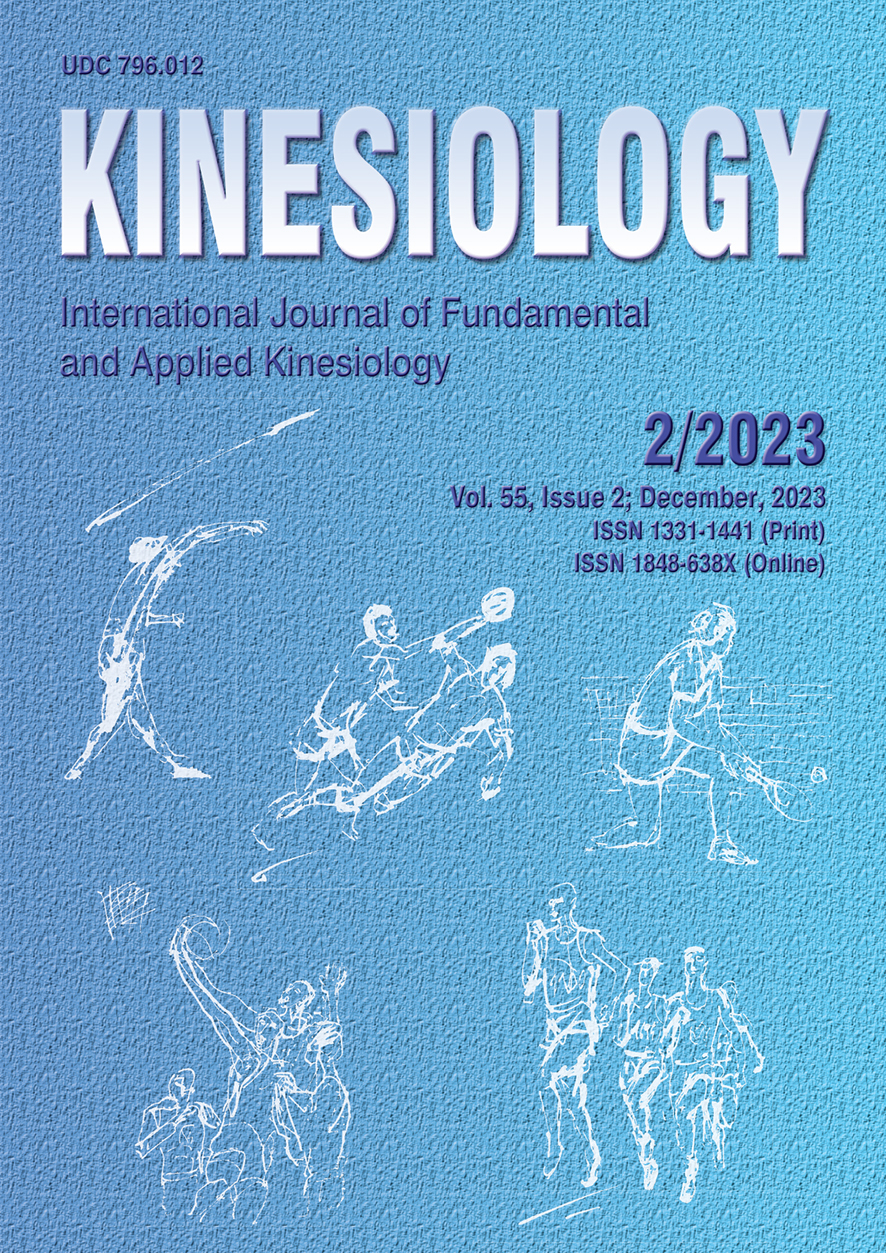PLYOMETRIC TRAINING PROGRAMS IN HANDBALL: A SYSTEMATIC SCOPING REVIEW
Keywords:
team sports, handball, muscle strength, resistance training, stretch-shortening cycleAbstract
This systematic scoping review aimed to comprehensively identify and analyze the available evidence pertaining to the effects of plyometric training interventions on handball players. The search for relevant literature was conducted across prominent databases, including PubMed, Scopus, SPORTDiscus, and Web of Science Core Collection. The eligibility criteria focused on healthy handball players, without restrictions on age, sex, or competitive level, who were exposed to plyometric training interventions, either alone or in combination with other training methods. A meticulous screening process was conducted, whereby 3,195 titles were carefully evaluated, resulting in the inclusion of 35 eligible studies in this systematic scoping review, involving a total of 891 participants. Most studies on plyometric training in handball focused on indoor settings, conducted during the in-season period, and involved tier two athletes. The training frequency typically ranged from twice per week, with a duration of between 5 and 12 weeks, and incorporated some form of progressive overload. The number of total floor contacts varied between 20 and 600. There was a considerable variation in outcomes across the included studies, but most of them demonstrated a positive impact of plyometric training on improving jumping ability, sprinting speed, change of direction, strength, and balance. In conclusion, the predominant focus of the studies was on the lower limb, specifically aiming to assess the intervention influence on variables associated with strength and power. Notably, these investigations consistently highlighted favorable effects on enhancing these parameters among handball players. However, further research is needed to explore the effects of plyometric training in handball, particularly regarding exercise selection, optimal volume and intensity, rest intervals, and tapering protocols.
Key words: team sports, muscle strength, resistance training, stretch-shortening cycle
Downloads
Published
How to Cite
Issue
Section
License

This work is licensed under a Creative Commons Attribution-NonCommercial 4.0 International License.
At Faculty of Kinesiology we recognize that access to quality research is vital to the scientific community and beyond. Kinesiology is non-profit journal and all costs of publishing and peer review process are covered by the publisher itself or other funding sources like Ministry of Science and Education of the Republic of Croatia. Full text papers are also available free of charge at http://hrcak.srce.hr/kineziologija. There are no restrictions on self archiving of any form of paper (preprint, postprint and publisher's version).
Articles are distributed under the terms of the CC BY - NC 4.0
Kinesiology does not charge any fees to authors to submit or publish articles in our journal.


